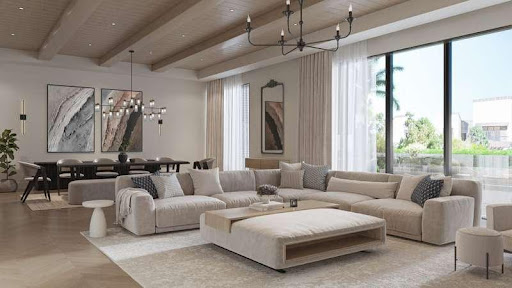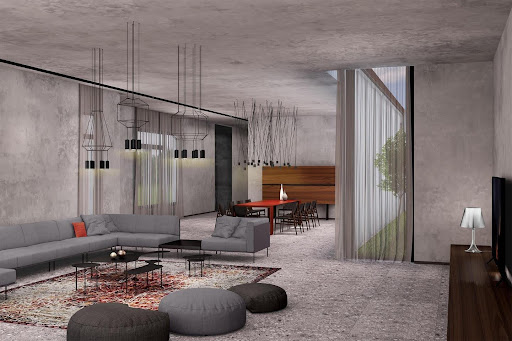What’s Universal Design all about? In a nutshell, it’s a design approach that makes spaces accessible and functional for everyone. From grand offices to your own living room, the role of Universal Design is undeniable and essential.
The use of Universal Design in actual interior projects is demonstrated by 4Space Interior, a preeminent design firm with a comprehensive understanding of inclusive design principles. In this article, we’ll break down each of the Seven Principles of Universal Design, paying specific attention to how they apply to interior spaces. We’ll do this by using our knowledge and fresh thinking from 4Space Interior.
- Equitable Use
What do we mean by equitable use? It’s the idea that the design should cater to people with diverse abilities. Consider door handles. Lever handles are not just easier for someone with arthritis; they also make life simpler for a toddler or someone carrying groceries.
And let’s dispel the myth that equitable use can’t be stylish. With modern design options, it’s easier than ever to be chic and inclusive. The bottom line? Equitable design isn’t just good ethics; it’s smart business that adds value to your space.
- Flexibility in Use
This principle champions the idea of choice and adaptability in design. In a well-designed room, various elements should offer multiple modes of interaction to accommodate a wide range of users. Consider the example of adjustable desk heights. Such desks are not only convenient for kids and adults but also cater to individuals with disabilities. This design feature breaks down barriers, making the space more inclusive.
Contrary to the notion that static designs exude a timeless elegance, they often limit the functionality of a space to a specific group of users. Flexibility in design should not be misconstrued as mere adaptability. It is about optimizing a space for multiple uses, thereby enhancing its value and utility.
- Simple and Intuitive Use
Designs should be easy to understand, regardless of the user’s familiarity with the space. Take the example of clear, easily understandable signs within a building. If you need a manual to navigate a space, that’s a design fail. It’s not about dumbing down. It’s about opening up. The benefits include fewer accidents and a sense of belonging for all.
- Perceptible Information
Information should be easily accessible to all. Think about color-coded pathways or audible announcements in a building. In today’s world, it’s easy to go overboard with flashy digital interfaces. Don’t. The key here is to make important details stand out, not get lost in a sea of information. Why? Because effective communication is the cornerstone of accessibility.
- Tolerance for Error
This principle advocates for a design approach that minimizes hazards and mitigates the adverse consequences of accidental actions. Your design should be forgiving. For example, the implementation of rounded corners on furniture serves not merely as an aesthetic choice, but as a critical feature that reduces the likelihood of injury.
Here’s the thing: expecting users to always interact with your space flawlessly is a fantasy. Real design accounts for real life, and real life is full of slips and trips.
- Low Physical Effort
It’s all about ease. Take ergonomic furniture as an example. It’s designed to support natural postures, reduce fatigue, and enhance comfort.
Contrary to the misperception that such features may promote laziness, they in fact advance the cause of inclusivity. The principle contends that comfort and ease are not luxurious add-ons but are essential attributes that should be accessible to everyone. Therefore, the focus here is to remove unnecessary physical barriers, thereby making spaces more user-friendly and universally accessible.
- Size and Space for Approach and Use
Last but by no means least, let’s talk about space. Whether it’s corridors that need to accommodate both wheelchairs and pushchairs, or room layouts that consider varying heights and reaches, space matters.
Minimalism has its merits, but remember: less is not always more. What’s the point of a beautiful, minimalist room if it’s not accessible to everyone? The principle here is simple but often overlooked: A space’s value is intrinsically tied to its utility for its users.
Making Universal Design a Reality
By now, you should have a clearer understanding of the seven principles of Universal Design. Each one comes with its own set of challenges, myths, and undeniable benefits.
Your next design project offers a brilliant opportunity. Beyond creating a visual masterpiece, it can be a functional one too, catering to all users regardless of age, size, or ability.
So why settle for the constraints of traditional design philosophies when you can expand your horizons to include everyone? With these principles in hand, you’re not just a designer. You’re a designer for humanity.





